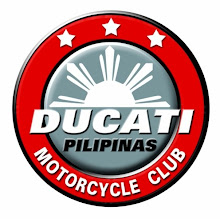Ask The Pro - Motorcycle Riding Technique
Keith Code has been helping people come to grips with fast-moving motorcycles for three decades. Shortly after retiring from AMA Superbike racing in 1979, he founded the California Superbike School. As the author of A Twist of the Wrist 1 & 2 and The Soft Science of Road Racing Motorcycles, this two-wheeled Obi-Wan Kenobi has forgotten more than most riders know. Here's his take.
Q. What's the best thing to do if/when the rear end steps out into a nasty slide? Conventional wisdom says steer into it, but that doesn't make any sense to me. Bikes are all about countersteering, right? Which is essentially opposite of what you do in a car, correct? So how does turning into the slide the way they teach you in Drivers Ed. do any good?
Say the rear steps out in a left-hander. Any sort of right-hand steering input just cranks the bike over more to the left, calling for rear grip that obviously isn't there. I'd rather make the tire's job easier and turn right before the slide goes too far and I run out of steering lock. If it goes that far, the front will go the wrong way and I'm liable to get spat over the high-side into the weeds. Apologies for all the creative visualization required here, but I'd really like to know what you think.
Name withheld by request
A. On a motorcycle, the fork rotation in a slide is automatic. The rider doesn't have to turn the bars in the direction of the slide. It is done for him by the machine, which is trying to maintain its own stability due to its trail. Whatever direction the bike is pointed-in the case of a slide, it's to the outside of the corner-the trail maintains the bike's directional stability by pointing the front wheel in that direction. That is a good thing.
If a rider successfully turned the bars to the right in a left-hand corner slide, the bike would pivot at the front contact patch, increasing the slide dramatically or high-siding bike and rider. Allowing the front end to turn left away from the slide-toward the inside of the corner-pushes the front contact patch. That is a bad thing.
A rider can countersteer out of a minor slide provided he doesn't chop the throttle. Throttle is key: Reducing throttle input without chopping it gets the bike through most slides safely, with or without countersteering. I developed my Slide Bike trainer to train riders not to chop the gas.
In a nutshell, most slides are best left alone. The bike will handle its own stability. Saving it is more difficult once the steering hits the lock, but chop the throttle and you won't save it at all. If you get the slide to the lock but keep the power on, the rear tire will stay loose. You can hold a slide like that for a long time given the space, horsepower and rpm.

No comments:
Post a Comment